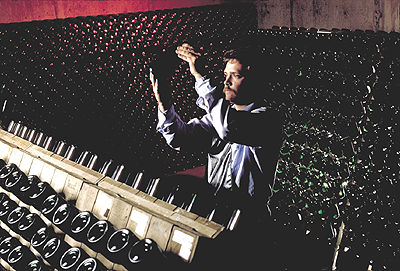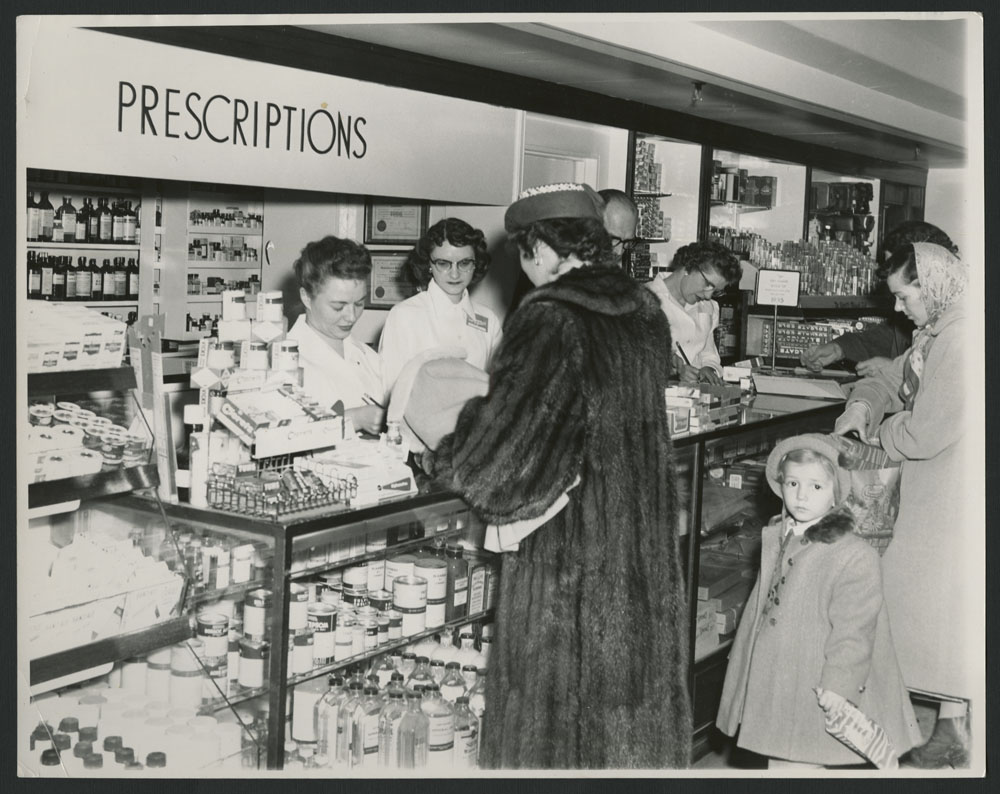John James McLaughlin (a.k.a Jack), beverage manufacturer, pharmacist (born 2 March 1865 near Enniskillen, ON; died 28 January 1914 in Toronto, ON). McLaughlin developed and trademarked Canada Dry Ginger Ale during the first decade of the 20th century. (See also Soft-Drink Industry.)

Early Years
John J. McLaughlin was the oldest of five children. His father, Robert McLaughlin, produced woodworking tools, including axe handles, before establishing a carriage works in Enniskillen, Ontario, in 1869. (See also Carpentry Tools.) As the carriage-building business grew, the family moved with the business to Oshawa in 1878. “Jack was a brilliant student,” according to McLaughlin family biographer Heather Robertson, “and his intelligence was matched by his warm heart, good looks and sense of humour.”
Entering the Soda Business
John J. McLaughlin originally intended to become a doctor but instead studied at the Ontario College of Pharmacy in Toronto (see Pharmacy). After graduating with high honours in 1885, McLaughlin moved to Brooklyn, New York, for postgraduate studies. After staying there for five years, he married Maude Christie in 1890.
While working at a pharmacy in Brooklyn, McLaughlin developed an interest in the mineral and soda waters he served. Carbonated beverages were believed to have health benefits and mixing them with flavoured syrups increased their popularity as a leisurely drink consumed at pharmacy soda fountains and in bottled form at home. The 1880s saw the birth of popular flavoured American soda brands such as Dr Pepper (1885) and Coca-Cola (1886). (See also Soft-Drink Industry.) Soda fountains also offered a non-alcoholic alternative to traditional bars and saloons that served as social spaces, especially for young women. The popularity of carbonated drinks rose alongside the growth of the temperance movement.
McLaughlin’s interest in mineral and soda waters may have also been prompted by his case of tuberculosis, which led to chronic coughing. The health benefits of mineral and soda waters were frequently touted in advertising. Drinking flavoured versions would have also been preferable to remedies such as cod liver oil.
McLaughlin’s poor health made his father believe that his son’s future lay in the family carriage-building business. While McLaughlin was still in Brooklyn, his father drew up a contract that made him a junior partner in the McLaughlin Carriage Company. McLaughlin declined the offer. His younger brothers, George and Robert Samuel, joined the family business, becoming partners in 1892. They saw the company’s evolution into an automobile manufacturer, culminating in its sale to General Motors in 1918. (See also General Motors of Canada Limited; Automotive Industry.)
After visiting Europe to study its beverage industry, McLaughlin established J.J. McLaughlin Limited Manufacturing Chemists in Toronto in 1890. (See also Food and Beverage Industries.) The company manufactured and sold soda fountain products and equipment to drugstores in Ontario and western Canada, including lines of distilled waters and fruit juices. Among his largest clients were the Hudson’s Bay Company and The Robert Simpson Company (see Simpsons Limited). By the mid-1890s, after using several locations in downtown Toronto, McLaughlin established a permanent production facility on Sherbourne Street, north of Queen Street, that underwent several expansions.
The firm’s waters, mainly marketed under the Hygeia Waters brand, used advertising campaigns that stressed their cleanliness, chemical purity and suitability for medical use. An ad in the August 1892 edition of the Ontario Medical Journal stated that the company’s use of pure soda bicarbonate was “immeasurably superior to the prevalent marble dust and whiting with their earthly impurities.” Other ads suggested that McLaughlin’s Hygeia Waters could treat ailments such as gout and rheumatic pains. ( See also Arthritis.) McLaughlin also played on public concerns about the quality of municipal water systems, producing ads in 1906 that declared that “city water is very often bad” and “unfit to drink.” (See also Water Pollution.)
Ginger Ale

John J. McLaughlin spent over a decade experimenting with ginger ale formulas. An early product, Hygeia ginger ale, was declared by The Globe in 1895 as “a favourite with connoisseurs, as they find it is not a ‘throat liniment,’ but a genuine GINGER ginger ale.” The most popular style of the period, which the firm marketed as McLaughlin’s Belfast Style Ginger Ale, was dark and syrupy and often served warm.
It is popularly reported that, following a trip to Europe, McLaughlin wanted to create a ginger ale formula with an effervescence and lightness that resembled champagne. The result, introduced in 1904, was a lighter, less sugary beverage initially marketed as McLaughlin’s “Canada Dry” Pale Ginger Ale. Within weeks of incorporating as J.J. McLaughlin Limited in October 1905, a trademark was filed for Canada Dry Pale Ginger Ale. Maude McLaughlin is reputed to have come up with Canada Dry’s enduring slogan, “The Champagne of Ginger Ales,” which gave the drink a high-class image. The rebranded beverage featured a logo that depicted a map of Canada crowned by a beaver. Demand prompted the opening of branch plants in Edmonton and Winnipeg.
Canada Dry was exhibited at that year’s Canadian National Exhibition. “To the skill and perseverance of Mr. J.J. McLaughlin belongs the credit for the discovery of a beverage for which thirsty Canadians have long been waiting,” the Toronto Daily Star declared in 1907. “This Ale has a mild yet piquant flavour, which is most agreeable, and its stimulating effect on the digestive organs makes it a prime favourite.”
Death
John J. McLaughlin’s tuberculosis prompted the family to establish a summer residence on Lake Rosseau in Ontario’s Muskoka region, where it was believed that the cleaner air was better for his health. As his condition declined, he also spent time in the American Southwest and southern Europe. He died of a heart attack at his home in Toronto’s Rosedale neighbourhood on 28 January 1914 and was buried in St. James’ Cemetery.
Legacy
As John J. McLaughlin’s children, Donald, Marjorie, and Roland, were still minors, his brothers, George and Sam, were appointed executors of Canada Dry. An American branch of the business was established with a bottling plant in New York City in 1922, partly to get around an increased tariff on imported ginger ale. Canada Dry was sold to P.D. Saylor and Associates in December 1923 for $1 million. Merged into the newly formed Norton Simon Inc. in 1968, it was sold to the Dr Pepper Company in 1982. After a series of subsequent corporate deals and rebrandings, it is now part of Keurig Dr Pepper.

 Share on Facebook
Share on Facebook Share on X
Share on X Share by Email
Share by Email Share on Google Classroom
Share on Google Classroom






